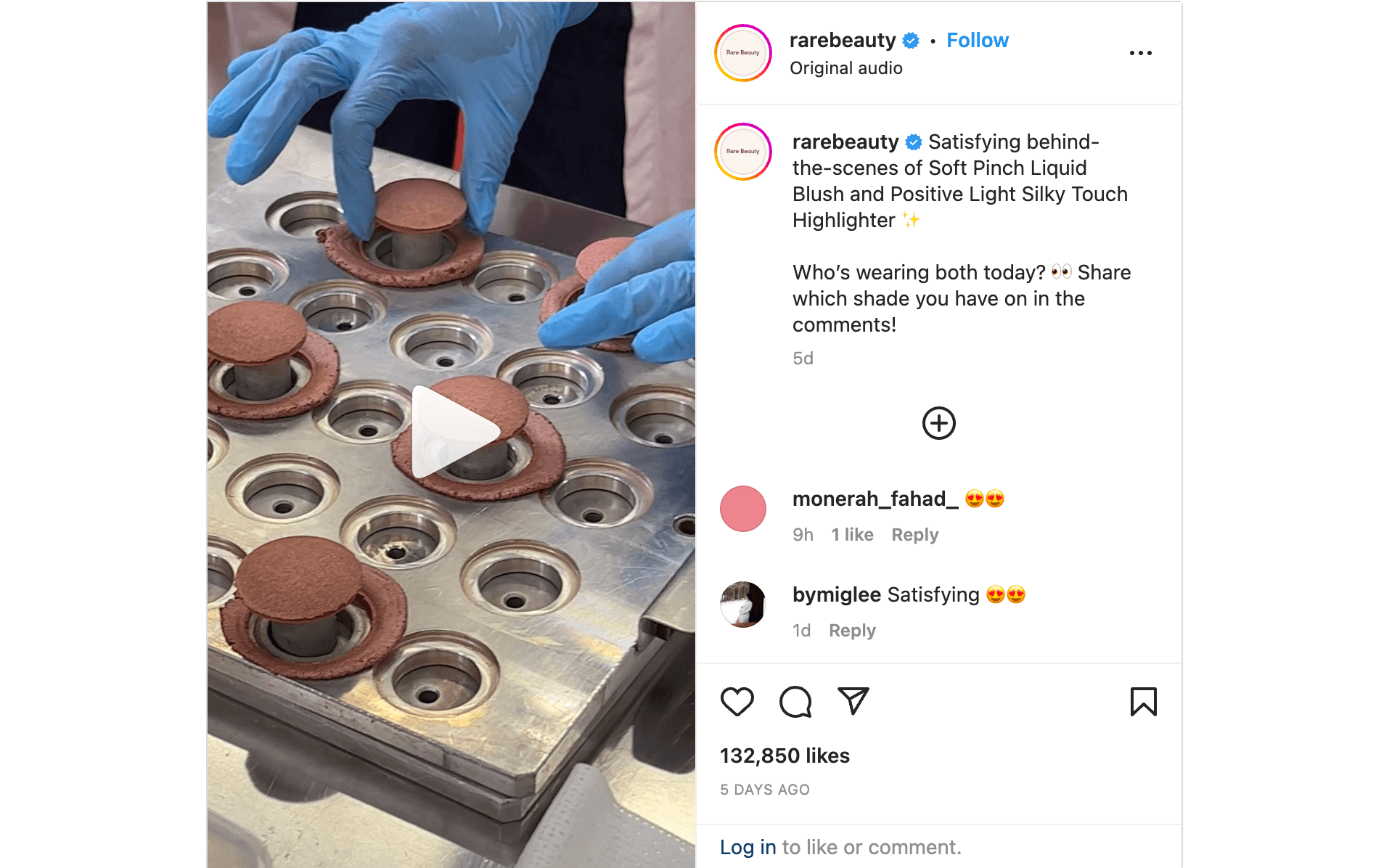Want a heads up when a new story drops? Subscribe here.
The business world underwent a major shift in recent years, with the pandemic showcasing the importance of businesses being easily accessible online and the immense rise of digital marketing. What has always been a vital tool is now the most powerful weapon we know and utilize to promote businesses and reach and engage with new and existing customers.
Riding the digital marketing wave is not something new. Yet it is constantly and, more importantly, rapidly evolving to present business owners with thousands of opportunities to grow their services. We can all collectively agree that digital marketing is not going away. We are too dependent on it to let it go.
That’s actually some great news. It is a good and comforting thought to have this constant, this ever-present thing that allows us to adapt, change and shift the focus of our businesses in more positive and transformative directions.
The pandemic rocked our world, and we may still be recovering from what it brought, but it also proved our point that digital marketing is not really going anywhere. In 2020, 2.37 billion people turned to online shopping and bought something online, according to Oberlo.
That number has been steadily growing since then and is expected to reach 2.56 billion by the end of 2023. With the numbers getting more and more impressive every year, it is safe to assume that with digital marketing, the opportunity to generate leads and convert sales is now more immense than ever.
With the pandemic now finally behind our backs, many people got inspired to start their own business journey. And while the possibilities are currently endless, one must know the required steps to do it all right. With this beginner’s guide, we are spilling all the secrets on how to find engaging ways to reach your target audience, test various marketing tactics, and measure the performance of your campaigns.
The time to act is now, so let’s dive right into the what, the how, and the whys of digital marketing!
Table of Contents
What is Digital Marketing?

There’s no time to waste because your competition is already ahead, boosting their digital marketing efforts. So without further ado, let’s start with the basics – what is digital marketing?
Digital marketing, also known as online marketing, is the use of various digital channels to communicate with and promote a business to its target audience. It is a mix of marketing efforts, tactics, and techniques companies use to reach consumers through the internet. The purpose of it all? An increase in revenue and sales.
At its core, digital marketing is all about connecting with consumers and promoting a brand using digital channels. That includes channels like websites, social media platforms, search engines, email, mobile apps, and more. You might be wondering why it is necessary to be active and support most of these channels if not all.
Well, successful digital marketing covers so many fronts because today’s users are everywhere – some spend their time scrolling through social media posts, others jump from website to website in pursuit of finding more information about their inquiries, and some like to browse their emails to learn more about new services and opportunities.
In a sea of so many ways to reach people and promote brands, it would be a waste not to pursue all of them.
Top Benefits of Digital Marketing
As of January 2023, 5.16 billion people use the Internet, and 4.76 billion use social media. If those impressive numbers are not enough to convince you of the unlimited power of digital marketing, here are some more benefits to keep in mind.

Targets the right audience
One of the greatest advantages of digital marketing is the ability to target the right audience. Gone are the days of mass marketing and hoping your message will reach the right people. With digital marketing, you can use tools to hone in on specific demographics and interests.
For example, let’s say you’re a small clothing boutique specializing in an eco-friendly, sustainable fashion. With digital marketing, you can easily target individuals interested in sustainable living and environmentally conscious lifestyles. By targeting this specific audience, you can ensure that your efforts and resources are not being wasted on individuals who may never be interested in your products.
In contrast, traditional marketing methods like print ads or billboards may reach a wider audience, but the chances of reaching YOUR target market are significantly lower. By utilizing digital marketing, you can optimize your efforts to target the individuals who are most likely to be interested in your products, ultimately leading to higher conversion rates and a more successful marketing campaign.
Time is precious! Maximize your time and efforts by focusing on the right audience! With digital marketing, you can precisely target the people more likely to be intrigued by your products or services. Say goodbye to aimlessly trying to grab everyone’s attention and hello to a more efficient and practical approach to marketing.
Doesn’t Break the Bank
For any startup, proper budgeting and optimizing costs are crucial factors for their survival, let alone their growth. So let’s talk a little bit about costs.

In the past, people paid hundreds of thousands of dollars to have their products promoted on print ads, billboards, and primarily on TV commercials. And while that might have worked for the time being, now things are different. Regular TV watchers are famous for skipping forward the commercials, paying zero attention to the ad blocks between shows or films.
Say, you’ve invested in creating a commercial that runs on TV. How many people do you think you will reach? And more importantly – how many of them will meet your target audience’s criteria? That’s what we thought. All the money you’ve invested and the time you’ve spent creating your commercial will be futile.
Is it the same with digital marketing? Unlike traditional marketing methods, DM allows for experimentation, trying out different channels, and reaching the exact type of people that might be interested in your selling propositions at a much lower cost.
The reason digital marketing is cost-effective in comparison to traditional marketing lies solely in the tools used. And yet more expensive doesn’t mean more effective. According to statistics, content marketing, one of the areas in digital marketing, generates 3x more leads than traditional marketing while also being 62% less expensive.
Versatility in Track Performance
Let’s go into greater detail discussing how you can track your efforts with digital marketing. Thanks to all your tools being online, you get to measure the success of your marketing campaigns and make informed decisions on what strategies are working and what needs to be adjusted.
For example, with digital marketing, you can track the number of clicks on a specific ad, the conversion rate, and the number of sales generated from that ad. That shows precisely how much return on investment (ROI) you get from each marketing campaign.

With all tools providing real-time data or performance reports, you can constantly make changes to improve your strategies. For instance, imagine you notice that your email marketing campaign is not generating as many leads as expected – you can immediately change things up to improve its performance. You can change the subject line, tweak the call to action, or experiment with different email templates.
In comparison, if you want to get some insight into how your TV commercial or radio ad is performing, you need to rely on surveys or other indirect methods to estimate the impact of your marketing efforts. The problem with that? In no way can these time-consuming methods provide the level of precision, accuracy, and reliability of digital marketing tools.
The performance-driven approach of digital marketing ensures real-time performance tracking and analysis capabilities that empower entrepreneurs and businesses of all sizes to make informed decisions and drive growth.
Freedom to Experiment with Tactics and Content Types
With digital marketing being so cost-effective, you get two more benefits – the opportunity to try out different marketing strategies and content types.
Unlike traditional marketing, where trying out new strategies is much more complex, expensive, and time-consuming, digital marketing allows you to test different marketing strategies simultaneously. That’s the best way to find what will perform best per your goals and growth plan.
For instance, you can create two separate campaigns and target them to different audiences or the same audience. You can test one campaign on different audiences. Regardless of how you decide to manage your campaigns, you can track the results of each and see which one is performing better in terms of engagement, conversions, and sales.
That is how you thoroughly understand what works, what doesn’t, what has potential but still needs improvement, and what needs to be abandoned momentarily. And that’s how you can make informed decisions about your business with little to no risk whatsoever.
Similarly to how one can experiment with tactics, platforms, and strategies, one can also experiment with content types. What content types a business will need depends solely on its target audience’s demographics, preferences, and desires.

Spoiler alert: Not all target audiences crave and consume the same content types equally. For instance, if Gen Zs devour the video format and want to get all their info watching short Reels or TikToks, Boomers are really keen on informing themselves through more ‘reputable’ sources like news articles and email newsletters*.
The point is that digital marketing gives you the flexibility to switch between content types to see what best resonates with the people you want to reach and convert.
Let’s go back to our sustainable fashion brand example. Let’s suppose the brand initially uses photos to showcase its products. Checking the metrics and statistics, it’s clear that something is lacking. The brand can then experiment with videos showing the clothing in action. People now start to engage.
The moral of the story? Thanks to digital marketing tools’ reports and statistics and through constant analyses and adjustments, brands can ensure they are using the most effective content types for their needs.
Engages the Customers
The beauty of digital marketing is that, when done correctly, it can be incredibly engaging for consumers. What is the first thing you think about when you hear Coca-Cola and Nike?
Is it safe to assume you are thinking of all those beautiful Christmas Coca-Cola commercials that made the face of Santa Claus as we know it today? Or maybe you think about the inspiring Just-do-it campaigns that make us believe in our innate potential.

Clearly, these international giants are now big names in today’s digital marketing world. And that is because they have dealt their hands right, considering their success in capturing the hearts and minds of consumers through targeted digital marketing campaigns.
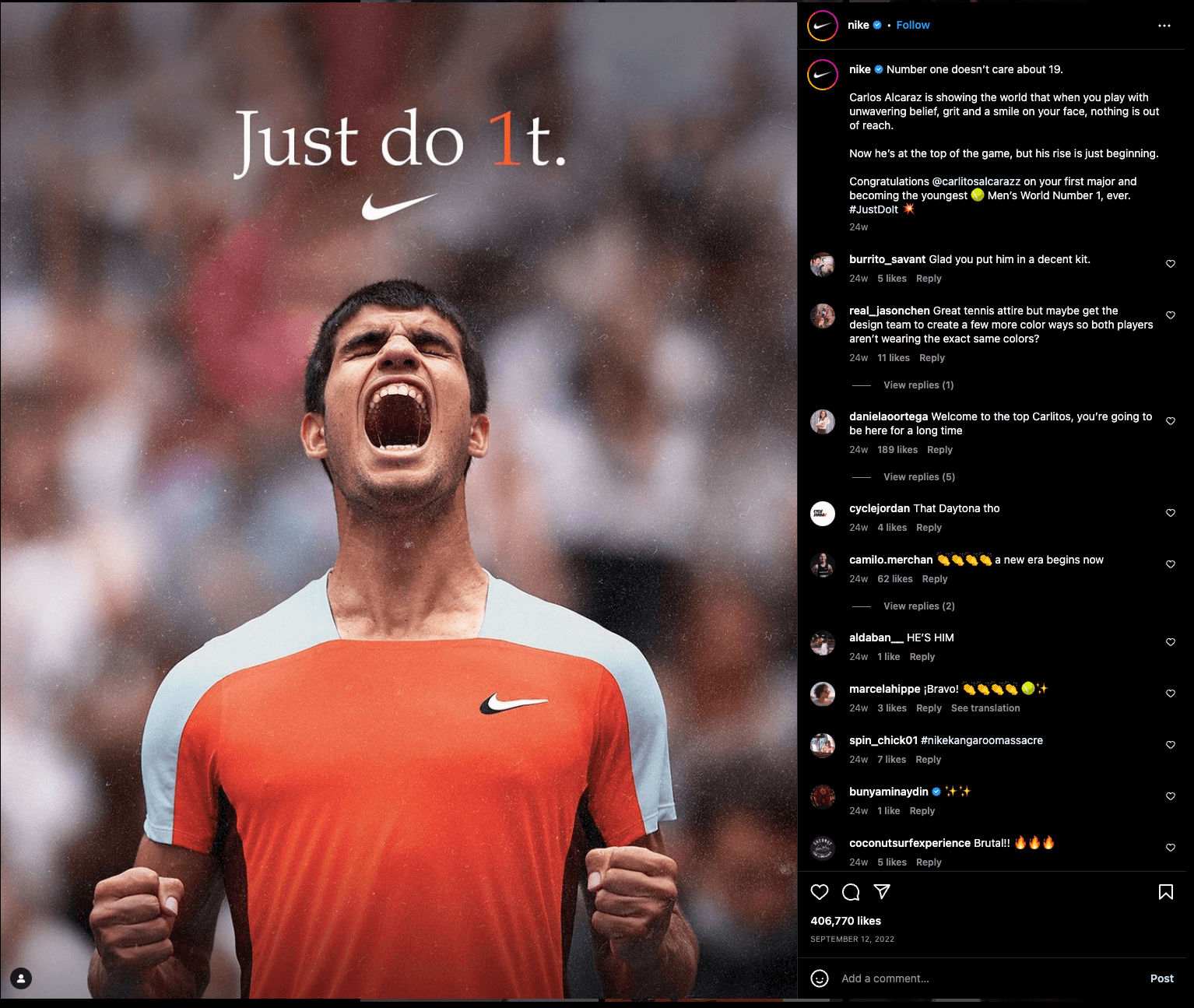
From interactive social media posts to eye-catching video advertisements, these companies have found success by engaging with their target audience in meaningful ways. The result? Stronger brand, loyalty increased sales, and greater visibility online.
And why should you care about brand loyalty? Because it is a crucial component of sustainable brand building, aka the science of creating real and lasting connections with consumers that leads to increased conversions and growth.
Types of Digital Marketing and Why You Need Them
Before we get to discussing digital marketing strategies that are here to stay, let’s make a quick stop to explain the different types of digital marketing and how they can help you achieve your marketing goals. From social media marketing to email marketing and search engine optimization (SEO), each type of digital marketing has unique strengths and benefits. By understanding these different types and how they work together, you can start working on a strategy that will skyrocket your startup.
Social Media Marketing
What was once merely a way to connect with loved ones from the other side of the world gave the foundations of what Social Media Marketing is and what it represents. A form of digital marketing that leverages social media platforms to promote a brand, product, or service, Social Media Marketing (SMM) has become a vital part of digital marketing, and for good reason.
With the average daily social media usage time reaching 2 hours and 31 minutes, platforms like Facebook, Instagram, Twitter, LinkedIn, YouTube, and Pinterest are now more attractive than ever, offering a cost-effective way to reach and engage with a large audience.

One of the main benefits of social media marketing is its ability to target specific audiences. Social media platforms allow marketers to use various targeting options such as demographics, interests, behaviors, and locations to reach the right audience with the right message. This targeted approach can result in higher engagement rates and conversions.
Social media platforms provide the perfect opportunity for businesses to connect with their audiences on a more personal and intimate level. Brands can now communicate with customers simply by replying to their DMs, liking their comments, or resharing their stories. Traditional approaches like TV commercials do not allow brands to obtain detailed and actionable feedback on the public’s opinion. In contrast, SMM solves all that by allowing them to request, collect, and analyze valuable feedback from their followers.
Because of that and the ability to build brand awareness, Social Media Marketing helps brands establish a strong online presence and build brand loyalty. Coming up with an effective social media marketing strategy is by no means an easy task. It takes a profound understanding of the market, your goals, your target audience, and, last but not least, the most appropriate social media platforms according to your brand-building plan.
Speaking of social media platforms, the thing about them is that one simply can’t use them all. Well, theoretically, they can. But is it worth the investment in time, money, and effort is something that should raise some serious considerations? With that in mind, the thing about social media platforms is that they target different audiences. For instance, if you are a B2B company and your audience comprises entrepreneurs and professionals, you’d probably choose more professional platforms, like Twitter and LinkedIn.
Social Media Marketing Platforms That Make a Difference
Let’s go briefly through the most popular platforms that could make your startup business thrive and completely change the pace of your growth.

With 2.963 billion active users, Facebook is one of the largest and most popular social media platforms. On Facebook, companies can create business pages or groups to share information about their products and services and engage with their customers and target audience doing so.
It also offers a variety of advertising options, such as sponsored posts and targeted ads, which can help businesses reach specific demographics based on factors like age, location, interests, and behaviors. Facebook is an essential platform for any business looking to establish a solid online presence and connect with its audience in a more personalized and engaging way.
Launched in 2010, Instagram is currently Gen Z‘s favorite social media platform. Thanks to its focus on visual content, such as photos and videos, Instagram is an appealing tool that allows startups to reach a much wider audience, kickstarting their marketing journey. With features such as Instagram Stories, Reels, and IGTV, businesses have a range of options to engage with their target audience and build their brand.
The platform has different built-in tools, such as hashtags and location tags, that additionally help in reaching a specific target audience and increasing their visibility. Instagram also offers a range of advertising options, including photo and video ads, sponsored posts, and influencer partnerships.

TikTok
Rapidly gaining popularity among users of all ages, TikTok relatively quickly became a social media phenomenon for Social Media Marketing managers and experts. Many had to act swiftly in their attempts to utilize the platform as a novel way to promote brands’ products and services to a younger demographic. The platform allows users to create and share short videos to showcase products, highlight key features, and engage with potential customers in a fun and creative way.
One of the unique aspects of TikTok is its algorithm, which uses artificial intelligence to surface content that is most relevant and engaging to individual users. Given that, businesses creating high-quality and engaging content on the platform have the potential to reach a large and highly targeted audience.
YouTube
The largest video-sharing platform in the world and a powerful social media marketing tool, YouTube is a platform that can work for literally every business. Brands can create and share videos that showcase their products or services, share educational content or behind-the-scenes footage, and engage with their audience through comments and likes.
YouTube advertising can be used to reach a specific target audience through targeted ads, allowing brands to show their content to the right people at the right time. Additionally, YouTube offers a variety of analytics tools to track the performance of your videos and understand your audience, providing valuable insights to improve your marketing strategy.

Twitter offers a unique way to connect with people in real-time, share updates, and engage in conversations with users globally. Twitter’s fast-paced nature makes it ideal for brands looking to stay up-to-date on the latest trends and news and to share their own content in a timely manner.
Customers like following brands on Twitter because they often consider it a place that is relevant and very business-oriented. With that in mind, businesses on Twitter can reach a broad audience, gain valuable insights into customer preferences, and build brand awareness. Companies can use Twitter to share news and updates, promotions, and industry insights with their followers and engage in conversations with existing and potential customers.
Designed specifically for professionals and businesses to connect, network, and share industry-related content, LinkedIn is the place where things get serious. The platform offers several features for businesses to leverage for their social media marketing strategies, including company pages, sponsored content, and targeted advertising.
LinkedIn is particularly beneficial for B2B marketing as it provides the perfect opportunity for businesses to connect with other companies, enterprises, and decision-makers in their industry. That is how they can establish themselves as thought leaders and build relationships that can grow into partnerships or collaborations.
While other platforms exist, these are the most prominent examples that play grand roles in Social Media Marketing. Keep reading to see what strategies you can use to boost your SMM efforts.
Influencer Marketing

A relatively new type of digital marketing, influencer marketing, has been gaining more and more popularity in recent years, reaching 61% of consumer trust from regular people on social media. With the rise of social media platforms, brands have been able to leverage the power of influencer marketing to connect with their target audiences on a more personal level. That type of marketing involves partnering with individuals with a large following on social media platforms, such as Instagram, TikTok, and YouTube, to promote a brand or product.
Influencer marketing is by no means a new concept. Before social media was a factor, brands relied on celebrities to endorse their products and services. However, this approach often came at a high cost and made it difficult for brands to measure the impact of these kinds of endorsements. Today, influencer marketing has become a more cost-effective and measurable alternative.
Types of influencers and partnership deals can’t even begin to cover everything one should know to practice influencer marketing successfully. One should understand how branding works, what brand proposition and values are, how loyalty is built, and how picking the right influencer with all those aspects in mind is crucial for executing an effective influencer marketing campaign. There are a lot of potential mistakes that one could easily make without even realizing it.
With influencer marketing, brands can now identify and partner with influencers who align with their brand values and target audience. That has allowed for a more targeted approach that can be customized to suit the needs of each brand.
In the same way as celebrities, influencers can develop a loyal following who trust their opinions and recommendations. That level of loyalty and trust can generate more buzz and excitement around a brand’s products and services.
What’s the best thing about influencer marketing? It is not limited to one specific platform. It can be executed across various social media platforms, including Instagram, TikTok, YouTube, and Twitter. Which platform will drive the best results for your brand depends on your target audience and marketing objectives.
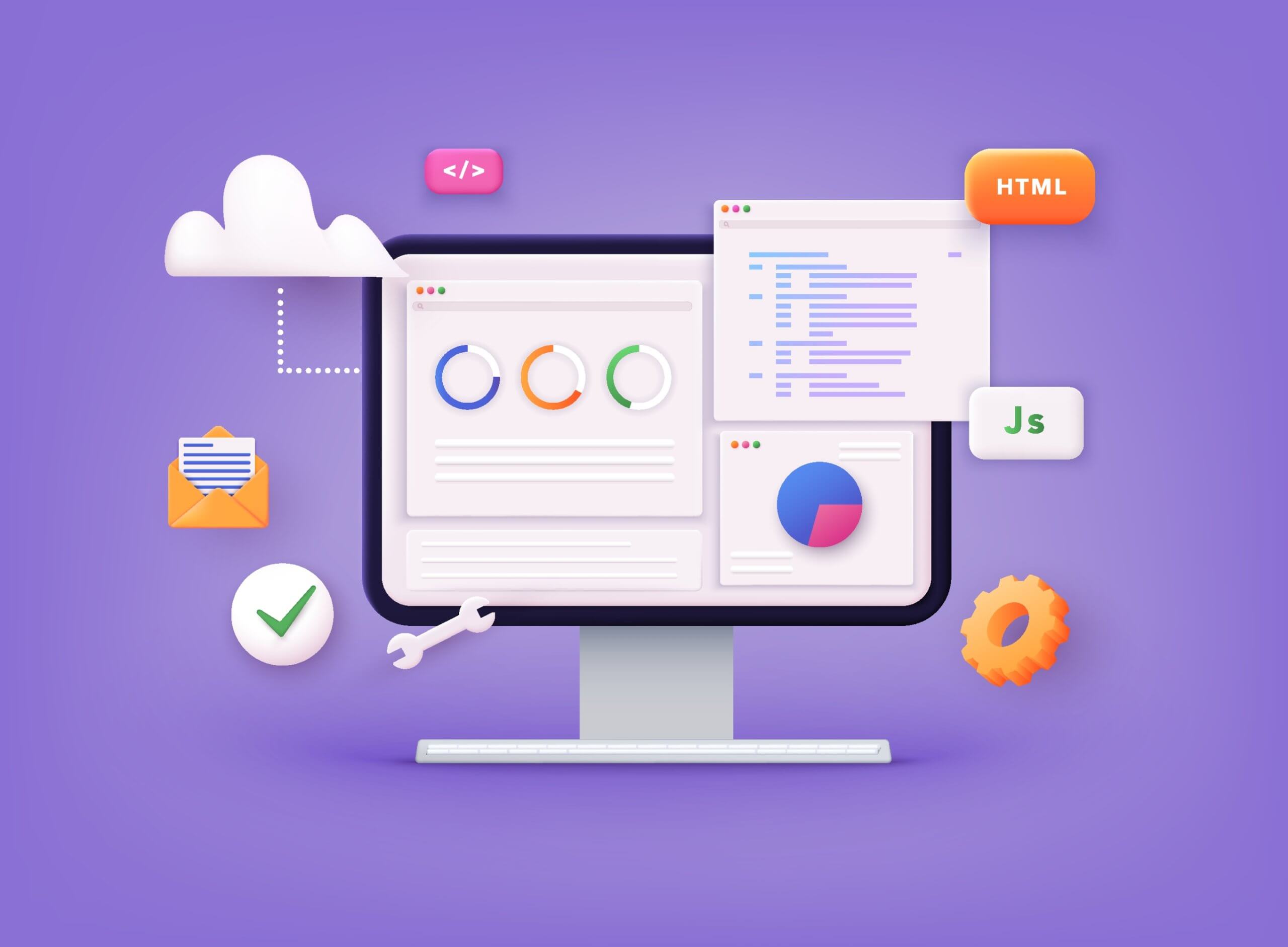
Search Engine Optimization
Nowadays, no business can survive without a website. Search Engine Optimization (SEO) aims to improve the quality and quantity of website traffic by making it more visible to search engines. With the growing competition and increased internet usage, having a website is not enough; it is essential to make it easily accessible to customers looking for your product or service.
That is another type of marketing that is too vast on its own, meaning a lot of research, skills, and efforts go into building a profitable and effective strategy. The process of SEO involves a variety of techniques to improve website rankings in search engine results pages (SERPs). These techniques include both on-page and off-page optimization. On-page optimization includes optimizing website content, internal links, and meta tags, while off-page optimization involves building high-quality backlinks from other reputable websites.
One example of on-page optimization is keyword research and optimization. By researching and including relevant keywords in website content and meta tags, search engines can easily identify what the website is about and improve its ranking in SERPs. Another example is optimizing website speed and mobile responsiveness, as these factors can affect user experience and ultimately impact website traffic. And with more and more customers doing everything on their mobile (nearly 50% as of November 2022), one must take those factors seriously.
On the other hand, off-page optimization focuses on building high-quality backlinks from other reputable websites. The more high-quality backlinks a website has, the higher it will rank in SERPs. Some off-page optimization techniques include guest blogging, social media engagement, and influencer outreach.
Implementing SEO techniques can significantly impact a website’s visibility and organic traffic. By improving website rankings in SERPs, businesses can attract more potential customers and increase their online presence. For example, a local bakery could optimize its website for “freshly baked bread” or “artisanal pastries” to rank higher in search results for customers in their area searching for those specific products.
Content Marketing

Having a website that ranks on the first page of the SERP or a social media account with lots of followers is futile if you don’t give people value. And value comes with quality content. With that in mind, Content Marketing is a fundamental aspect of any successful digital marketing strategy.
It involves creating and sharing valuable, relevant, consistent content to attract and retain a clearly defined audience. The ultimate goal is to drive profitable customer action. The reason why it is so essential to invest in quality content? Customers demand more value in the form of informative, entertaining, or educational content tailored to their interests and needs now more than ever.
Brands can use different types of content to engage with their audience. Blog posts, social media posts, videos, podcasts, e-books, infographics, and case studies are some examples of content types that brands can create to share their message. Each type of content serves a specific purpose and appeals to a different segment of the audience.
For instance, blog posts are an excellent way to share long-form informative and educational content. Brands can use blog posts to provide insights, analysis, and thought leadership on topics relevant to their audience. Beautifully curated social media posts are great for short-form content that is visually appealing, shareable, and a surefire way to generate some earned media. Videos and podcasts are perfect for delivering engaging and entertaining content that can be consumed on the go.
The key to successful content marketing is to create content that resonates with the audience. It should focus on the audience’s pain points, interests, and needs. For example, a B2B software company might create a case study to demonstrate the effectiveness of its product. A lifestyle brand might create an influencer-led video to showcase its products in action.
Content marketing is not just about creating content. It also involves distributing it to the right channels to reach the target audience. Brands must identify the channels their audience uses and distribute their content accordingly. For example, a B2B software company might use LinkedIn to distribute its content to its target audience. On the other hand, a lifestyle brand might use Instagram to showcase its products visually.
Pay-Per-Click Marketing

No one said that advertising is unnecessary and doesn’t work now that the world is digital. On the contrary, Pay-Per-Click (PPC) Marketing is living proof that brands still need sponsored promotions to reach new potential customers. PPC marketing is a digital advertising model allowing businesses to place ads on search engines, social media platforms, or other websites and pay accordingly for their efforts.
Unlike traditional marketing, with PPC, brands can analyze and change all their ads to drive the best results. Common PPC goals are lead generation and traffic. But how does PPC work?
PPC advertising works by bidding on keywords relevant to your business or product. Once again, SEO efforts pay off. When a user searches for those keywords, your ad will appear at the top of the search engine results page (SERP) or in the sponsored section of a social media platform. The amount you pay per click depends on the competition for the keywords and the quality of your ad campaign.
Hold on! It gets better. You have the ability to target specific audiences. You are not paying for a TV ad that hundreds of people of all ages of life might see. You choose the group of people you want to see your ads based on location, age, interests, and even behavior.
PPC advertising also provides valuable data on user behavior and campaign performance. You can track clicks, impressions, and conversions and use that information to optimize your campaigns and improve ROI. Something that is simply impossible with traditional advertising methods.
Email Marketing
Email marketing is a digital marketing technique that entails sending promotional messages to a group of individuals through email. It might have existed since the dawn of the Internet, but it is, to this day, one of the most effective digital marketing methods. Many have tried to undermine it, but email marketing has been rock solid.
Think of it as a direct way of communicating with your target audience, delivering personalized messages, and promoting your business. You can stay in touch with your customers, inform them about new products or services, and create a relationship with them.

One of the main benefits of email marketing is that it can be highly targeted. With email marketing, you can segment your email list based on customer preferences, location, or any other relevant factor. By sending personalized emails, you can increase engagement and conversion rates. And to make it even better, let us tell you that you also get measurable results. You can track the open rates, click-through rates, and conversion rates of your emails to measure the effectiveness of your campaigns.
Email marketing can take many forms, such as newsletters, promotional and transactional emails. Newsletters are regularly sent to keep subscribers informed about the latest news, events, or promotions related to the business. As the name suggests, promotional emails boost specific products or services, and it is usually a targeted group of subscribers that receive them. Transactional emails are sent in response to a customer’s action, such as a purchase or sign-up, and can include order confirmations, shipping notifications, or password resets.
Another advantage of email marketing is its affordability. Compared to other digital marketing methods, such as paid advertising, email marketing is relatively inexpensive. You can reach a large audience with minimal costs, making it an ideal choice for small businesses or startups with limited budgets.
And while not every business requires an active email marketing strategy at all times, depending on their business niche, different startups can benefit greatly from having one.
Affiliate Marketing
Lastly, let’s talk just a little about Affiliate Marketing. While many confuse it with influencer marketing, this type of digital marketing involves promoting a product or service through an affiliate network. Essentially, it’s a form of revenue sharing between a company and its affiliates, where affiliates earn a commission for each sale or action that results from their marketing efforts.
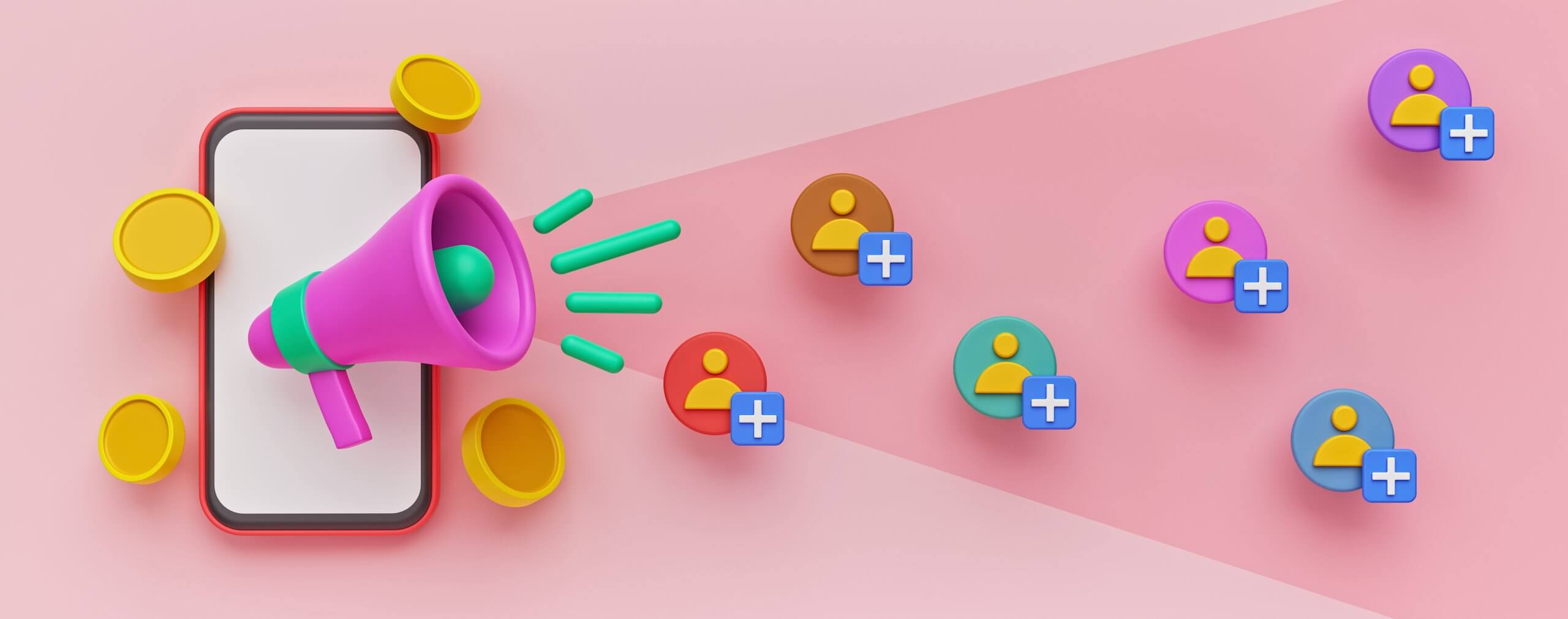
The concept of affiliate marketing has been around for decades, but the rise of e-commerce and online shopping has made it more accessible and widespread than ever. The process of affiliate marketing typically involves three parties: the merchant or business offering the product or service, the affiliate who promotes the product or service, and the consumer who makes the purchase. Affiliates use other types of digital marketing, such as social media, content marketing, and email marketing, to promote products or services to their audience.
One of the key benefits of affiliate marketing is that it allows businesses to expand their reach without spending large amounts of money on advertising. By partnering with affiliates with an established audience, brands can tap into new markets and reach potential customers they may not have been able to otherwise reach through other marketing channels.
🔥 Tip: Hundreds of growing businesses use Socialfix to create their digital marketing strategies and showcase their products and services. 
What is a Digital Marketing Strategy (DMS)?
Before we move on any further with digital marketing strategies, let’s add some more definitions to your digital glossary first.
Digital Marketing Strategy
The organized approach is used by a company or brand to promote the business on various digital channels, such as the internet, mobile devices, and social media. It defines the overall goals and objectives of the digital marketing efforts and outlines the tactics and techniques that will be used to achieve those goals. Digital marketing strategies are typically broad and encompassing and take into account the target audience, the competition, and the unique value proposition and strengths of the business or brand. By having a clear digital marketing strategy, businesses can focus their efforts, allocate resources effectively, and measure their progress toward achieving their goals.
Digital Marketing Tactic
The specific activities companies or brands use to execute their digital marketing strategy. One DMS can present a handful of tactics used to obtain the goals. Basically, tactics are the building blocks that make up the strategy, and they work together to achieve your overall marketing goals. Targeting people on ads, making YouTube videos because the audience likes them, and focusing on internal linking to boost your blog visibility and optimize your website are all examples of digital marketing tactics.
Digital Marketing Campaign
Linked to specific goals, a digital marketing campaign is limited in its lifespan with a specified deadline and usually targets messages across one or two market segments. Campaigns aim to deliver the right message to a target group of new potential customers. That group might also focus on including existing customers as long as they fit the initial criteria for the campaigns. Strong visuals and creatives are fundamental elements of the campaign as they are used to catch the viewer’s attention. Clear call-to-actions, such as “Sign up for our newsletter.”, “Buy now.” and others are widely used to create a sense of urgency, making customers aware that if they want to experience the benefits, the time to act is now.

An Example Illustrating the Differences Between the Terms
Don’t worry! We will clear up the confusion! Despite often being used interchangeably and sharing the same purpose – to help brands achieve their business objectives – these terms have unique nuances that differentiate them. To illustrate it all, let us give you an example.
A brand’s digital marketing strategy might be to increase brand awareness and drive sales through a multichannel approach that includes social media, email marketing, and influencer partnerships.
One of their tactics might be to create a series of Instagram posts that showcase their latest products and encourage followers to engage with the brand.
Finally, the brand might run a campaign to promote a new line of a fan-favorite product. It might include a series of paid ads on social media, an email newsletter to subscribers, and a unique discount code for first-time buyers.
Why Does Your Business Need a DMS?
Creating an efficient digital marketing strategy consists of hours of hard work. Knowing how many types of digital marketing there are, you can imagine how much time one will need to create a strategy for each, then combine them all and make them work simultaneously. So is it worth the effort? Yes. But why is investing time, skills, and money into a solid DMS a game-changer?
Provides Consistency and Structure to Your Marketing Goals
Working on a clear digital marketing strategy always pays off. Trust us! We have been doing this for a long time. One of the best things about it is that it ensures all your marketing actions are intended and taken toward achieving the same goals. Without a clear plan, it’s easy to become scattered and unfocused, with various marketing initiatives pulling your efforts in different directions.
By implementing a digital marketing strategy, you can establish consistency and structure in your marketing goals. With a structured approach, you can set specific targets and objectives for your marketing initiatives and measure progress against these goals. That allows you to track the success of your marketing efforts and adjust your strategy as needed to achieve better results.
There’s nothing better than an effective DMS to help you align all your marketing efforts with your overall business objectives. Honestly, that’s the surest way to drive your brand to success and growth.

Once your efforts and objectives are aligned, you can start thinking about consistency, which is crucial in digital marketing. It is the safest and most efficient way to build your brand and establish trust with your target audience.
When your marketing efforts are consistent, your audience will learn to recognize your brand, its specific values, and its offerings. Increased brand loyalty and improved customer retention over time are the most precious gifts that come with DMS and consistency. And that’s precisely what you will get if you do your digital marketing right.
Provides Real Data About Your Marketing Efforts
We already hinted at that, but with a DMS, you can measure the effectiveness of your marketing campaigns and tactics. For example, by analyzing metrics such as website traffic, click-through rates, and conversion rates, you can see a clear picture of what’s working and what’s not with your SEO marketing strategy. That is how you can make informed, data-driven decisions on how to proceed, where to focus your marketing efforts, or allocate your budget more effectively.
DMS data reports allow you to segment your audience and personalize your messaging based on their behavior and preferences. By tailoring your marketing efforts to specific customer groups, you can create more relevant and targeted campaigns that resonate with your audience and drive better results.
And even if statistics and data analysis might not be your jam, understanding how your tools work and, more importantly, the data they provide is pivotal for your growth. Your tools are your most powerful weapons, so make sure you know how to handle them well.

Useful Tools You Might Like
Nowadays, almost, if not all, digital marketing tools provide valuable (real-time) data:
- Social Media Marketing: Hootsuite, Sprout Social, Buffer, Agorapulse, Falcon.io;
- Influencer Marketing: AspireIQ, Upfluence, NeoReach, Traackr;
- Search Engine Optimization Marketing: Ahrefs, SEMrush, Moz, Google Analytics, Google Search Console, WordStream;
- Content Marketing: CoSchedule, HubSpot, SEMrush;
- Pay-Per-Click Marketing: Google Ads, Bing Ads, Facebook Ads Manager, AdRoll;
- Email Marketing: Mailchimp, Constant Contact, Sendinblue, Campaign Monitor, ActiveCampaign;
- Affiliate Marketing: Refersion, ShareASale, Commission Junction, Awin, Impact.
Improves Your Customer Relationships
The importance of customer relationships is long known. You want people to trust your brand, the product or services you offer, and your messages – you want to build a loyal relationship with them. Relying on solid digital marketing strategies can help you get to know your audience better and learn how to communicate with them correctly. By leveraging data analytics and customer behavior insights, you can create effective customer journeys that address your customer’s needs and preferences at every touchpoint.
With more digital marketing channels providing direct communication opportunities with customers, you can quickly respond to inquiries and address issues. This level of responsiveness can help build trust and loyalty with customers, ultimately improving their overall experience with the brand. Additionally, brands can easily collect and analyze customer feedback through digital marketing channels, allowing businesses to make informed decisions and continually improve their products and services based on customer needs.
Building a Digital Marketing Strategy From Scratch: Here’s How
Building a solid digital marketing strategy from scratch always looks like a formidable challenge for first-timers. To help you do it yourself, we will walk you through all the essential steps.
Define Your Marketing Goals
First things first – setting your goals. You can’t build a strong digital marketing strategy without a clear understanding of what you want to achieve, right?
Defining marketing goals will help you stay focused and evaluate your progress accurately. That is how you and your team will know where to point your marketing efforts and how to optimize your budget. Some examples of marketing goals could be increased brand awareness, lead generation, boost in conversions, improved customer loyalty, or planning a successful launch of a new product or service.

While there are many ways to define your goals, The SMART Goals frame, proposed by George T. Doran, is a preferred model for many businesses from all business niches. The mnemonic acronym SMART stands for:
- S – Specific: Your goal should be clear and well-defined. Avoid vague statements that are difficult to quantify or track progress on. For example, rather than setting a goal to “increase sales,” you could set a more specific goal to “increase online sales by 20% over the next six months.”
- M – Measurable: Your goal should be measurable, meaning that you should be able to track progress and measure success. You can use metrics like website traffic, social media engagement, or revenue to measure progress toward your goal.
- A – Assignable: You should determine the person responsible for achieving the goal. This person will be accountable for tracking progress and making any necessary adjustments to the strategy.
- R – Realistic: Challenging goals are great, but the goals you set should also be within reach. Consider your resources and constraints when defining your goals.
- T – Time-Related: Your goal should have a specific timeframe for achievement. That helps to create urgency and keeps your team focused on achieving the goal within a specific timeframe. For example, “increase website traffic by 25% in the next three months” is more time-related than “increase website traffic by 25%.”
Regardless of whether you decide to use the SMART frame, ensure that they are clear, realistic, and easy to understand. If your goals are too ambitious or unrealistic, you risk losing motivation or wasting resources.
Ultimately, defining your marketing goals helps you clarify your priorities, focus your efforts, and create a roadmap for success. Thanks to them, you can measure your progress, adapt your strategy, and achieve better results in the long run.
Research and Target Your Audience
Now that you have your goals, you need to know how to execute them. The first step in doing that is finding and understanding your audience, or the people that will be most intrigued by your content and your products.

To determine your target audience, you will need to go through a variety of demographic, age-specific, and interest-specific analyses. Audiences will vary from one niche to another. For instance, hardware stores will probably target males in their 30s and above, while beauty stores will focus on females in their early 20s instead.
Buyer personas or marketing personas are a great way to describe your audience. This is a description of your ideal customer that is created using a combination of market research and real data about your current customers. It is a semi-fictional representation used to guide your marketing efforts and ensure they are targeted and effective.
To create a buyer persona, you should know your target audience’s demographics, interests, behavior patterns, and pain points. Using tools like Google Analytics, social media analytics, surveys, and customer feedback can help you gather this data.
Define Your Budget
Your budget will determine the scope of your strategies and campaigns, the types of digital marketing you can invest in, and the resources you can allocate to each area.
The first step in defining your budget is determining what you can afford. Consider your overall marketing budget and what portion of it you want to allocate to digital marketing. Research the costs of various digital marketing channels, tools, or software you will use. Some marketing types, such as PPC, may require more significant financial investment, while others, such as social media marketing, might be more cost-effective.
Once you have a general idea of your budget, allocate it according to the priority of each channel and tactic. Your digital marketing budget may need to be adjusted over time as you measure the effectiveness of your campaigns and adjust your strategy accordingly.
Choose Your Marketing Types and Channels
Once you have defined your marketing goals and researched your target audience, the next step is to choose the marketing types, strategies, and channels that will help you progress on your journey. That is basically the stage where you determine what types of marketing you will be investing in.
Regardless of your niche, selling proposition, or services, Social Media Marketing, Search Engine Optimization Marketing, and Content Marketing are always a must. Initially, you might survive without Email Marketing or Pay-Per-Click Marketing in case you are on a tight budget, but you can’t exist without SMM, SEO, and content to fill those.

Given that, this is when you should pick your primary social media marketing channel. For instance, if your target audience consists of Gen Zs, then TikTok and Instagram should be among your top choices. However, if your target audience comprises people over the age of 40, then Facebook is a must. Or if you want to impress the business community, LinkedIn should be your top choice.
You get our point. Do your research, think of your audience, and choose your marketing channel accordingly. Ultimately, it’s important to select a mix of marketing types and channels that work together.
Set Your Metrics
Knowing where you will point your efforts and the goal you’ve set will help you determine your metrics or KPIs. KPI stands for Key Performance Indicator and pretty much gives you insight into how (un)well your strategy is performing.
What metrics you choose to track will depend on the goals you have defined for your marketing strategies or campaigns. For example, if your goal is to increase website traffic, some metrics you could track include website visitors, page views, and bounce rate. If your goal is to increase sales, you could track conversion rate, cost per acquisition (CPA), and return on investment (ROI) instead.
In addition to tracking goal-related metrics, you should also monitor metrics related to the performance of individual marketing channels. That includes metrics such as click-through rate (CTR) for PPC ads, open rates and click-through rates for email campaigns, and engagement rates for social media campaigns.
Regularly Measure and Reevaluate Your DMS
Measuring and evaluating the performance of your digital marketing strategies is crucial to ensure that you are achieving your goals and maximizing your ROI. To effectively measure and reevaluate your DMS, you should regularly track and analyze your KPIs.
Regularly reevaluating your DMS allows you to adapt to changes in the market, stay ahead of the competition, and optimize your strategy and budget for better results. That means constantly testing and experimenting with different marketing tactics, channels, and messaging to see what works best for your audience and business. It also involves staying up to date with the latest digital marketing trends and technology to ensure that your strategy remains relevant.
Time-Proven Digital Marketing Strategies and Tactics That Everyone Should Know

With new technologies and tools constantly emerging, digital marketing is continuously evolving. However, some strategies have stood the test of time and continue to be effective for businesses of all sizes and industries. In this section of our article, we will explore some of the most time-proven digital marketing strategies that every marketer or startup owner should be familiar with.
6 Social Media Marketing Tactics
New trends emerge every minute, so brands go above and beyond to attract audiences on social media. However, regardless of the current trends, some social media marketing practices and strategies have earned their spot in our time-proven list. Those are:
Hashtag Usage
Since the dawn of social media, hashtags have been an easy way to reach a new audience. Similar to SEO’s keywords, they show the central points of your business. And while we have witnessed some fluctuations in how brands use hashtags, in 2023, they continue to be relevant.
Hashtags increase a brand’s recognition. However, one should not use them lightly. They should represent the brand – its purpose, products, or services. With that in mind, you can’t simply use random hashtags under every post.
The maximum amount of hashtags you can use for one post is 30. Yet, if you want our advice, don’t use them all, at least not all the time. You don’t want to make your posts look spammy or like you are trying too hard.
On Instagram, you will see that every brand is doing its hashtags strategy differently. Some use many hashtags, while others, like Adidas, use only one – #impossibleisnothing under most posts. Turning their slogan into a hashtag is a smart move to reach people, and honestly, this hashtag alone is more than enough. That is Adidas, after all.

User-Generated Content (UGC)
Social media followers love getting involved. They want to feel as close to the brand as possible. They want their thoughts and opinions valued by the people behind the brand. And that is how User-Generated Content (UGC) came to be.
A strategy that encourages followers to create and share their own content featuring a brand’s products, UGC is something you should try at least once, preferably when you have already gathered at least a small following.
Usually, UGC comes in the form of photos or videos and is a great way to increase engagement and build a sense of community around your brand. Many brands use UGC all the time. #mycalvins is a UGC campaign by Calvin Klein that has generated 871,381 posts on Instagram alone. Users are encouraged to use the hashtags under their posts, answering how they feel wearing the undergarments: “I _____ in my Calvins.”

Giveaways
Who doesn’t love a good old giveaway? Withstanding the different currents and trends in SMM strategies, giveaways will always be an attractive way to reach new people.
Many brands, especially startups, rely on giveaways, and other types of contests rely on giveaways to promote themselves. And there is nothing wrong with that.
As long as you follow platform-specific rules and regulations when running promotions on social media, you can only benefit from giveaways. Of course, don’t overdo it. It would seem suspicious if you organize giveaways every month. However, one giveaway every few months is totally acceptable
Geo-Tag Posts
A creative way to attract local followers is using the geotagging function on your posts. That is especially helpful if your business has a physical location or targets a specific geographic area.
Trust us, people will appreciate you taking the time to put in your store’s physical location. Having a physical store is no requirement though. You can be a photographer or videographer working in X area and still using geolocation marketing to your advantage.
For instance, Kierstin Jones is a Utah photographer with nearly 120k followers on Instagram. If she is using geotagging on her posts to step up her SMM game, why wouldn’t you too?
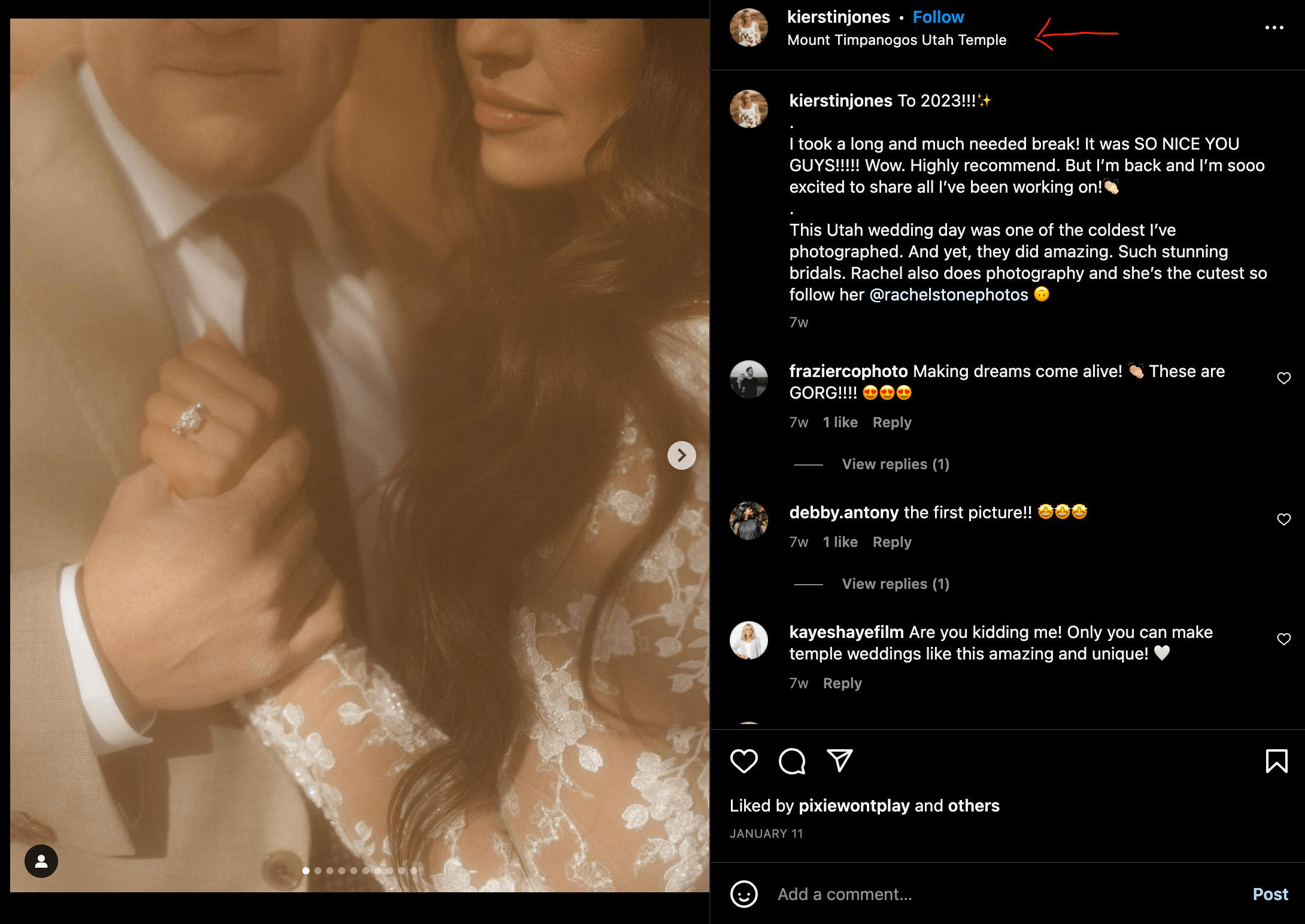
Social Media Calendars
Once you start doing social media seriously, you will soon realize how much you need social media calendars. There’s so much going on with SMM that there’s always something you will forget to post.
That is normal, and you can always post your content later. BUT! If you follow a strict posting timeline, you might miss the perfect time to do it. So don’t be surprised if you miss your slot and your content never reaches the number of people your other posts normally do.
With social media calendars, you can load everything on a platform, schedule your posts, stories, reels, etc., according to your posting schedule, and never again stress over that. Honestly, social media calendars are the life-saver you never knew you needed.
Ask for Feedback
Feedback, good or bad, helps brands change and grow sustainably. And as we already mentioned, people love giving feedback because they want to be heard. So, ask, and you shall receive. Do it at least once every couple of months.
What matters is what you do with the information you get. That is when brand reputation management comes into place. In any case, be responsive, and kind and learn from the feedback you receive. That is how you grow.
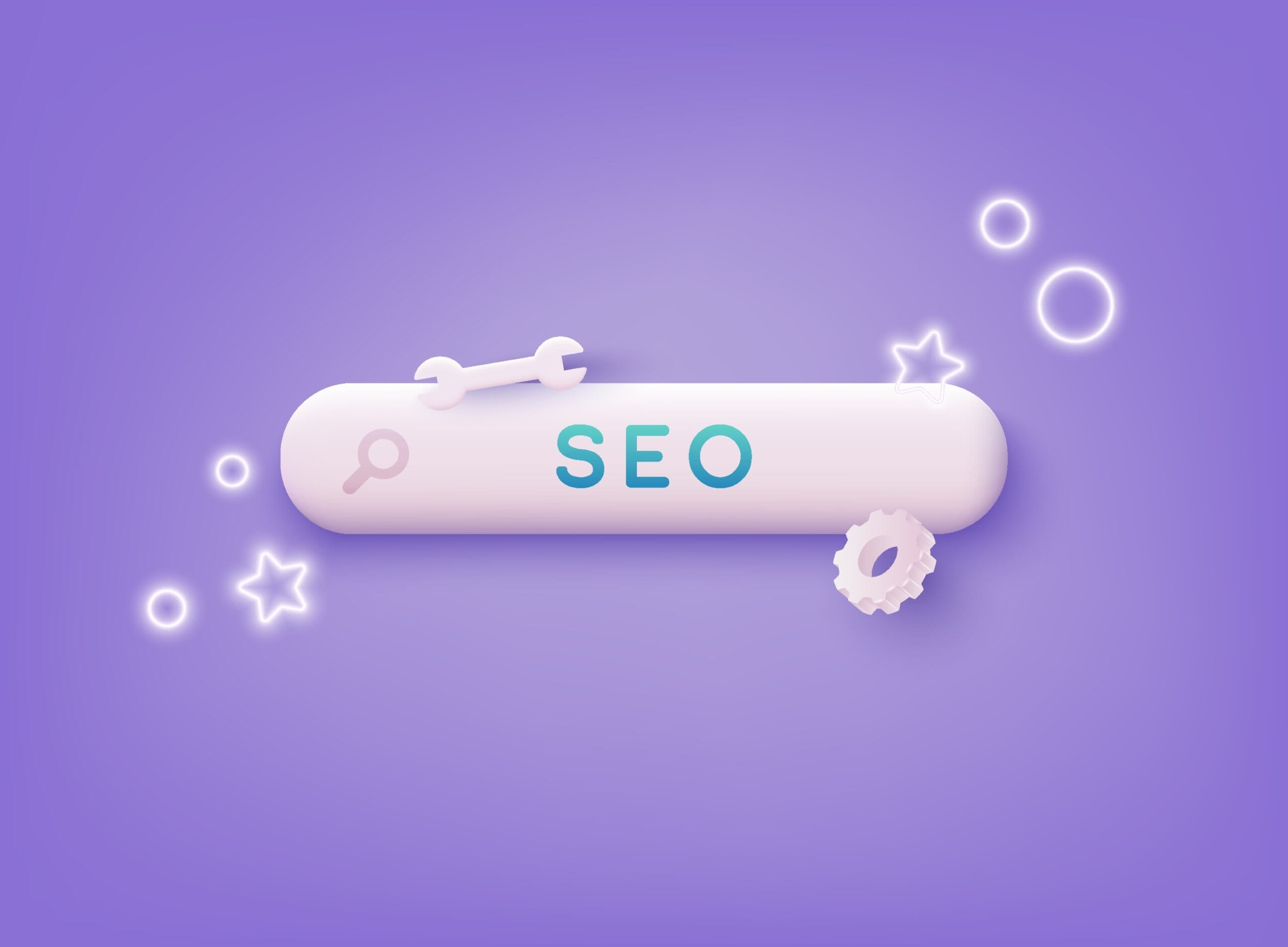
6 SEO Marketing Tactics
Search engine optimization (SEO) marketing is too complex to have its most efficient strategies explained briefly. However, we will give it a try:
Study Competitors’ Pages
No strategy can be executed without a competitor analysis first, so always study your competitors. More specifically, examine their best-performing pages.
Identify the keywords they are ranking for and the content they are creating. Use this information to conduct your keyword research and plan the content types you need for your website.
Location of Primary Keyword
What you do with your keywords and how you use them is crucial for your ranking. However, adding your primary keyword early on in your content might prove to be more beneficial than you anticipate.
The location of your keywords matters. And Google pays extra attention and puts more weight on keywords that are at the top of the website pages. Do with that information what you want.
Optimize Meta Titles and Descriptions
That is SEO Marketing 101. Your meta titles and descriptions should accurately describe the content on your website and include relevant keywords. Make sure they are unique and compelling to encourage clicks.
That is how you escape duplicate content which is something that no one, especially Google, approves of. It is tricky and time-consuming, but writing unique meta titles and descriptions is always worth it, and honestly, it is the least you can do.
Alt Text All Images
Google crawlers literally go through every piece of content on a website. Yes, that includes your images too, so if we were you, we’d optimize those as well.
You can use descriptive file names. And while that’s a step you might miss, alt-texting your images is a must. Alt text stands for Alternative text and literally describes the picture. That is how the crawler knows that the picture is not spammy and is actually relevant to the website.
Don’t forget to compress all the images on your website to improve page loading speed.
Page Loading Speed
Speaking of page loading speed, let us tell you that a significant percentage of consumers, approximately 82%, have reported that slow-loading page speeds impact their purchasing decisions.
Compressing images is the first thing you could do to improve your loading speed. You could also reduce your redirects, cache the web pages, or eliminate unnecessary plugins.
Optimize for mobile
Do you remember when we said that nearly half the people use only mobile devices for social media or web searching? You need to optimize your website for mobile users as they will continue to grow.
Rely on responsive designs that are easy to navigate on smaller screens. Mind your page loading speed and core web vitals.

5 Tactics for Your Content Marketing Strategy
Content marketing and SEO marketing are a duo like no other. One can’t go without the other. Why have keywords if you don’t use them to produce quality content and vice versa – why have any content that consists of no keywords to rank it?
Content marketing and SEO complement each other. With that in mind, a carefully executed content strategy could immensely boost your SEO efforts.
Here’s what an effective content strategy consists of:
Content Plan
Creating a content plan that aligns with your business goals and objectives is a definite must. This plan should include a clear understanding of your target audience, their pain points, and the types of content that will resonate with them.
You should also identify the channels through which you will promote your content, such as social media, email marketing, and guest blogging. Once you have completed your initial research on the target audience, planning your content should become much easier.
Brand Story and Tone of Voice
Consistency is crucial in everything you do. Your content marketing makes no exception. Establishing and following your brand story is among the first things you should do.
Depending on your target audience, you should decide how you will present your values and content through the tone of your messaging. Once you do that, you should ensure that every type of content you post online reflects that. That will help you to build brand awareness, loyalty, and trust among your target audience.
Relevancy Always Wins
Don’t get distracted by posting content outside of your niche. Ensure the content you put out there is relevant to address the audience’s interests and pain points.
While conducting keyword research, identify the topics and keywords your audience is searching for, and create content around those topics.
For instance, if you own a bakery and your content revolves around yummy culinary posts or recipes, suddenly posting origami diagrams or instructions will be out of place and will leave your audience perplexed. That is something you don’t want.
Topic Clusters
The more organized your content is, the easier it will be to create. Topic clusters are an effective tactic for improving your content marketing efforts. It involves grouping related content in clusters around a specific topic or theme.
That will help you improve the overall relevance and depth of your content, but what’s even better is that it will make it easier for search engines to understand and index your content.
Occasional Audits
Review the content you’ve put out for the world to see every so often. That includes social media posts and copies, email newsletters, website pages, and lastly blog articles.
If needed, you can revisit the content, identify gaps, add new information, or remove something that is no longer relevant. Old content can still generate new traffic. Use tools to analyze your current data and see what it is you can change to improve your engagement and conversion rates.

5 Email Marketing Tactics
If you are finally ready to embark on the journey Email Marketing is, then these time-proven tactics could help you with your email marketing strategy because it requires much more than just sending out periodic newsletters:
Optimize CTAs
Call-to-actions (CTAs) encourage the reader to take action. Whether you want them to visit your website, check out your new blog post, or purchase your newly launched product.
CTAs should be straight to the point yet catchy enough to grab your readers’ attention. Test different options to see which ones perform the best.
Share User-Generated Content (UGC)
Remember how UGC is a fantastic way to engage your audience on social media? Reuse the content regular people from your audiences have created for you and use it in your emails.
Seeing that other people engage with your products and have taken their time to create content for your brand will intrigue your readers, gaining their trust. After all, there’s no greater proof that your business model works than earned media from your audience.
Share customer reviews, social media posts, or other UGC in your emails to showcase the value of your brand.
Try A/B Testing
Things always come down to experimentation. Try how well your emails will perform with different subject lines, formats, and other variables to see what resonates best with your audience.
A/B testing can help you identify the most effective elements of your email campaigns and optimize them for better results.
Segment Your Audience
Personalization is essential for effective email marketing. Segment your email list based on demographics, purchase history, or other factors to deliver targeted messaging that resonates with each group.
Nudge Inactive Subscribers
Don’t forget about your inactive subscribers! Send targeted emails to re-engage them and remind them of the value of your brand. You could offer a special promotion or exclusive content to incentivize them to come back. However, don’t spam them too much!
Top DMS for 2023 and Beyond
Time-tested and reliable tactics and strategies are terrific. However, one should never miss on novel techniques in the digital world, especially if those are sure to stay.

Authentic and Simple Content is Trending on Social Media
With the content shared on social media being more and more curated, people have started reminiscing. They miss the simplicity of the early social media days. Remember how we snapped out the restaurant or homemade meals and instantly uploaded them on Instagram? Or how we reshared YouTube songs on our Facebook walls with the lyrics that hit us the hardest?
That is when the content was authentic. And people crave that from brands today. They are tired of feeling bombarded with overwhelming information and advertising, so they have become more discerning about what they choose to engage with. As a result, businesses have to adapt their content strategies to meet this demand for authenticity and simplicity.
Genuine and honest content is what people crave. They have become sensitive to deceitful or manipulative content. So they don’t interact with it the same way they once did. And statistics prove that. 92% of tested consumers report that authenticity is a determining factor for which brands they like and support.
So what is considered authentic content? User-generated content, behind-the-scenes looks at a company’s operations, or stories demonstrating the brand’s human side. By integrating this content type into their content plans, brands can build trust and credibility with their audience, increasing loyalty and customer retention.
Messaging should be clear and easy to digest, no unnecessary fluff or jargon is needed.
Examples of Authentic and Real Content
One example of a brand that has successfully implemented an authentic and simple content strategy is Rare Beauty, Selena Gomez’s vegan and cruelty-free makeup brand.
It doesn’t get more real anywhere else on social media than Rare Beauty’s Instagram account. Constantly resharing UGC, self-acceptance and self-love reminders, and behind-the-scenes footage of the production process, Rare Beauty is the epitome of authenticity. And we are so here for it.

Short Video Content Rules Social Media
With platforms such as TikTok and Instagram Reels paving the way for the trend, short video content has become a dominant form of media on all social media platforms. In today’s fast-paced world, people have shorter attention spans. And the short video format is a great way to capture their attention and deliver a message quickly, succinctly, and effectively.
It’s also a terrific way to create content that can be consumed on the go, as users can easily watch short videos during their daily commutes or while waiting in line. Visually stunning, with bright colors, quick cuts, and catchy music, short videos are no joke. Video production takes a lot of time and requires a valuable set of skills and knowledge, and often a fair budget if one has additional professional help.
Yet, because they are short, entertaining, and engaging, they are highly shareable, making them the perfect content type for securing more earned media. And if you are still not convinced that you should try the short video format, let us tell you that it has the highest ROI (30%!) of any other social media marketing strategy. Let that sink in.
Examples of Businesses Using Short Video Content
Today there is no self-respecting brand on any social media that doesn’t use the short video format.
For instance, Sephora has been using short videos on Instagram to showcase makeup tutorials and product demonstrations. These videos are highly engaging and allow customers to get a quick glimpse of the products in action. Most of Sephora’s reels reach an average of 500k people, with some passing the 1 million bar.
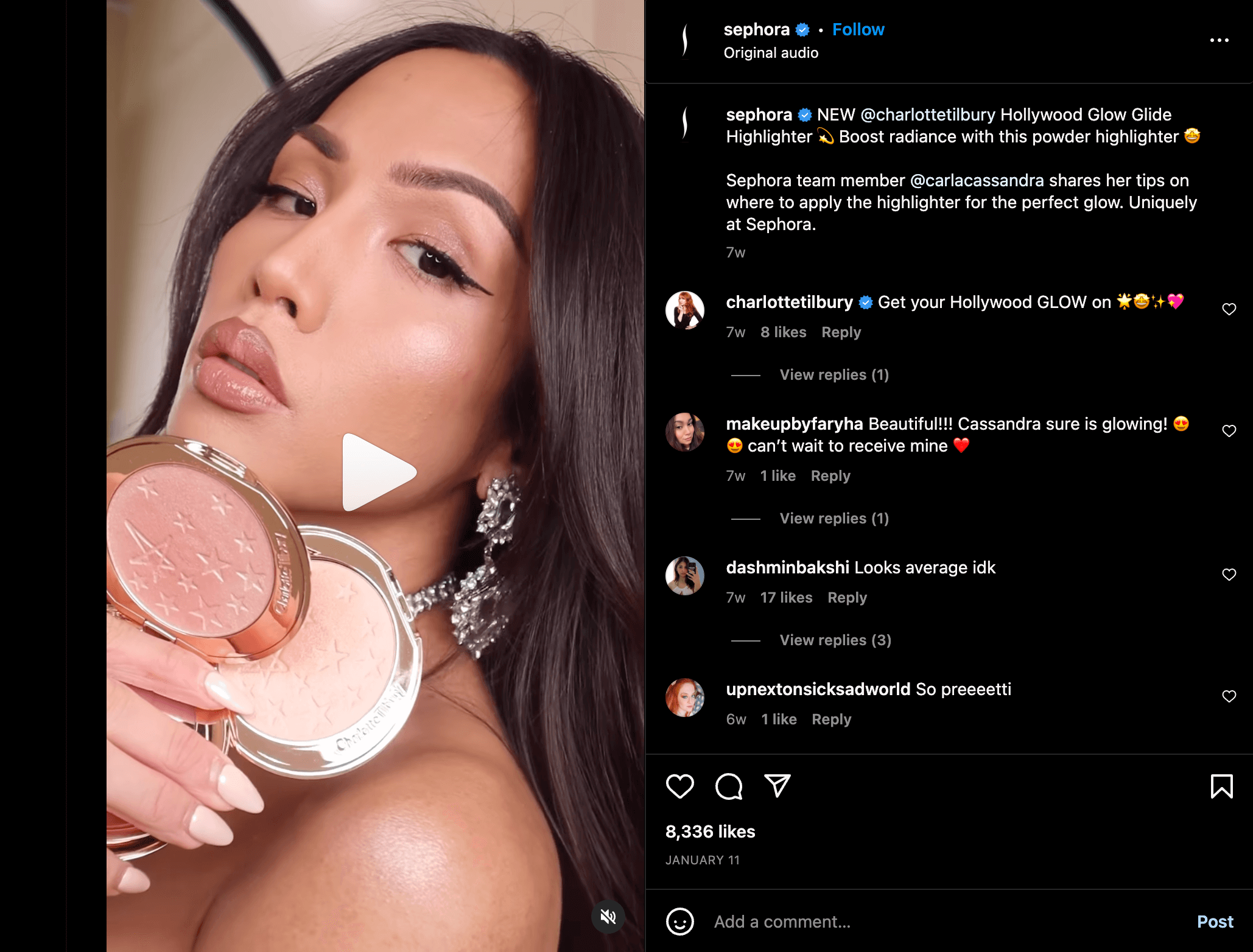
Not only the big brands can benefit from the short video format. Small business owners and startups can, too, reach broader audiences than usual, thanks to Instagram Reels. The Pet Scout Shop is an online shop with nearly 30k followers on the platform.
Selling dog accessories, the account shares lots of reels, promoting their products and reaching a generally big audience (6k people on average). Yet some of their lifestyle mini-vlogs have been viewed by 28k+ people. Going viral is paw-sible and, quite frankly, much easier when dogs are involved.

And things are even better on TikTok as far as short videos are concerned. For instance, Chipotle, currently with 2.1 million followers, reaches hundreds of thousands, sometimes even millions of people, with TikToks. The company uses the platform to showcase its menu items and engage with younger customers. Their videos often feature catchy music and visually stunning food shots, making them highly shareable.

Tips for Creating Great Short Videos
After all, if you want to give it a try, here are some tips for creating result-driven short videos.
- Keep it Simple: Short videos should be focused and to the point. Short videos last up to 2 minutes and 30 seconds, so anything over that is considered a long video. Don’t cram too much information into a single video to avoid overwhelming your viewers.
- Be Quick to Grab Attention: The first few seconds of your video are crucial. Use eye-catching visuals and a catchy soundtrack to grab your viewer’s attention from the start.
- Use Captions: Many users watch videos on social media with the sound off, so be sure to include captions to ensure your message is still getting across.
- Use Humor: Everyone loves a good laugh. Humor is a spectacular way to engage viewers and make your videos more shareable. Just be sure to keep it appropriate for your target audience.
- Experiment with Different Formats: There are many different formats of short videos, from tutorials to behind-the-scenes glimpses of your business. Experiment to see what works best for your brand.
- Jump on Trends: TikTok is constantly overflowing with trends. Analyze the newest ones, and don’t hesitate to jump on the trends, use popular sounds, incorporate memes, and anything that might make your video go viral.
Bonus tip: Trends emerge on TikTok first. While many reshare their TikTok content on Instagram as Reels, it isn’t until a couple of weeks later that Instagram catches on with the trend. Despite that, one thing about the short video format is that new people will continue to see it long after the videos have been initially posted.
Newsjack Popular Trends
Newsjacking is a marketing strategy that involves leveraging a trending news story or event to promote your brand or product. The idea is to tap into the conversation and buzz around a particular topic and create content that aligns with it, hoping to get noticed and generate publicity for your brand.
The best thing about newsjacking? Brands can piggyback on the popularity of a trending topic or event without having to create content from scratch. That saves time and resources while capitalizing on the attention and engagement generated by the news story.
The downside? The content should be relevant to their audience, which can often be tricky or even impossible.
To effectively news jack a trend or event, it’s important to be timely and relevant. That’s why brands should stay on top of current events and understand their target audience to create content that resonates with them.
That can include creating blog posts, social media updates, or videos that reference the news story or event and tie it back to your brand or product.
Examples of Newsjacking
One example that proves newsjacking is not a new concept, but an underestimated one, is the 2013 Super Bowl blackout. As soon as the power went out in the stadium, Oreo‘s social media team quickly created a tweet with a photo of an Oreo cookie in the dark and the caption: “You can still dunk in the dark.” The tweet went viral, generating thousands of retweets and favorites and earning widespread media coverage.

Though not generating the same results as Oreo, Tide, and SimCity also jumped on the newsjacking train.


This year’s Super Bowl with Rihanna’s iconic product placement of the Fenty Beauty blotting powder also generated its fair share of buzz, and brands made sure to get the most out of it. Here’s just one example of Sephora newsjacking to promote another Fenty Beauty product.

Overall, newsjacking can be a powerful marketing strategy for any brand. Brands can news jack all kinds of events and other trends that happen to be relevant to their industry or target audience. For example, a fitness brand could create content around the Olympics or a music festival, while a tech company could create content around the latest Apple event or product launch.
Nano- and Micro-Influencer Collaborations Are the Next Big Thing
Just like social media marketing, influencer marketing is also constantly evolving. Once brands were 100% invested in Macro- and Mega-influencer, today, the tables have turned. Collaborations with Nano- and Micro-influencers are on the rise!
Despite their smaller following on social media platforms, typically ranging from a few hundred to a few thousand followers, these influencers are often seen as more authentic and relatable to their audiences, as their content is more niche and targeted. We told you that people crave authenticity these days!
Collaborating with Nano-(1k to 5k followers) and Micro-influencers(5k to 10k followers) can be an effective way to reach a highly engaged and loyal audience. These influencers have built strong relationships with their followers and often have a deep understanding of their interests and preferences. By partnering with these influencers, brands can tap into their expertise and leverage their influence to drive engagement and sales.
Furthermore, these 2 influencer groups are also more affordable for brands to work with, making it easier for smaller businesses or startups with limited budgets to enter the influencer marketing space.
Examples of Brands with Nano- and Micro-Influencer Campaigns
One example of a brand that has successfully leveraged Nano- and Micro-influencers is Glossier, a beauty brand that targets millennial and Gen Z consumers. Glossier has worked with many Nano- and Micro-influencers with high engagement rates with their audiences. These collaborations have helped the company reach a wider audience and build a strong brand following, according to an interview Emily Weiss, the company CEO, gave a couple of years ago.


Similarly, sustainable outdoor apparel brand Patagonia has worked with several small influencers and like-minded athletes that share a common passion for environmental conservation and sustainability. These influencers have been able to share their personal experiences with Patagonia’s products and mission, which has helped to further solidify the brand’s commitment to sustainability in the eyes of their followers.


Overall, the trend toward nano- and micro-influencer collaborations is expected to continue in the coming years. As brands look to establish more authentic and personalized connections with their target audience, these smaller-scale influencers can offer a valuable opportunity to reach highly engaged and loyal followers.
Forget About Third-Party Data Collection (Cookies)

Here’s a new SEO strategy to try! Third-party data collection, mainly through cookies, has been a common practice for many businesses. They use it to gain insights into their customers’ behavior and preferences.
However, recent changes in privacy regulations and browser settings have made it more difficult to collect this type of data. Additionally, consumers are becoming more aware of the data being collected and are demanding more control over their privacy.
To deal with these challenges, you can shift your focus to first-party data collection. That includes gathering information from completed on-site purchases, surveys, customer feedback, and CRM data. By utilizing this information, you can gain a better understanding of your customers and tailor your marketing efforts accordingly.
Furthermore, relying on first-party data can lead to more accurate targeting and personalization. With this approach, businesses like yours can establish a direct relationship with their customers and build trust by being transparent about the data they collect and how it is used.
While it may require more effort to collect first-party data, it can ultimately lead to a more effective and sustainable marketing strategy.
Personalized Customer Experience for Email & Content Marketing
The next thing you could try to expand your content or email marketing strategy is to work on personalizing the customer experience even more. With the abundance of options available to consumers, providing a customized and memorable experience has become essential for businesses to retain customers and attract new ones.
Nurturing your current customer base should be a top priority for any business, no matter how long they’ve been on the market. You can do this by tracking customer behavior on your website and analyzing their past purchases, searches, and abandoned carts. This data can then be used to create targeted email campaigns that provide relevant product recommendations, exclusive discounts, and personalized content.
To personalize the experience even more, you can try sending personalized emails that suggest products related to a customer’s previous purchases. That helps with sales increase but, more importantly, shows the customer that you value their past purchases and are interested in their needs. Similarly, sending a follow-up email to a customer who has abandoned their cart can help to bring them back to your website and complete their purchase.

Moreover, personalization can extend beyond the purchase experience. Following up with customers after a purchase, sending thank-you emails, and requesting feedback can all help to strengthen customer relationships and build brand loyalty.
In addition to nurturing your current customer base, personalized customer experience can also help to attract new customers. By leveraging first-party data to create targeted email campaigns and content, you can reach potential customers who have shown an interest in your products or services.
Many businesses have started to embrace personalization, with some even taking it to the next level. For example, Netflix uses data analytics to provide personalized recommendations based on a user’s viewing history, while Spotify creates personalized playlists based on a user’s listening habits.
Use AI in Advertising
Artificial intelligence (AI) has been a buzzword in the advertising industry for a while now. With AI, marketers can optimize their advertising campaigns to deliver better results and ultimately drive more revenue.
One of the main benefits of using AI in advertising is the ability to personalize ad content to individual consumers. By analyzing data such as browsing history and past purchases, AI algorithms can tailor ad messaging to each customer’s specific interests and needs. That results in a more personalized customer experience and increases the chances of conversion.
AI can also be used to optimize ad placement and targeting. With real-time data analysis, AI algorithms can determine the best time and place to display an ad to a particular audience, increasing the chances of engagement and conversion. That also helps marketers avoid wasted ad spend on audiences less likely to convert.
Another benefit of using AI in advertising is the ability to automate ad creation and optimization. AI-powered tools can quickly generate ad content and variations, test them in real time, and adjust them for optimal performance. That saves time and resources for marketers, allowing them to focus on other aspects of their campaigns.
As technology continues to evolve, marketers who embrace AI-powered tools and strategies will have a competitive advantage in delivering personalized, targeted, and optimized advertising campaigns.
Is Digital Marketing a One-Man Show?
It would have been awesome if it was, but unfortunately, the short answer is no. With so many digital marketing types and all the different tools accommodating each, there’s not enough time in a day for one person to handle and take care of everything alone.

Firstly, there is the strategy aspect of DM. Developing a comprehensive plan that encompasses all aspects of digital marketing, from Search Engine Optimization (SEO) all the way to Email Marketing, requires a deep understanding of each area.
For example, a successful SEO strategy requires technical expertise, an understanding of algorithms, and the ability to analyze data. On the other hand, an effective email marketing strategy requires a variety of skills, such as copywriting and a thorough understanding of the target audience.
With each marketing type having so many specifics, there are different types of specialists for each. Copywriters deal with content marketing, social media managers handle the posting and communication on all social platforms, SEO specialists ensure that a website ranks high on the search engine’s first pages, and so on.
Each role requires a unique skill set, making it difficult for one person to handle everything. For example, a graphic designer is responsible for creating visually appealing graphics and animations that convey the brand’s message. On the other hand, a copywriter deals with crafting persuasive messaging that resonates with the target audience.
Moreover, digital marketing is evolving daily. New technologies and trends emerge regularly, and one should always be up-to-date with the latest developments. That requires constant learning and training to keep up with the latest techniques. Trying to do this alone can be overwhelming, especially for businesses that don’t have the resources to keep up with the pace of change.
Can Socialfix Help?
As a full-service digital marketing agency, we help businesses with all aspects of their digital marketing strategy, from developing a comprehensive plan to executing it with our team of experts. Handling digital marketing in-house is not easy. That is why we offer personalized solutions to meet businesses’ unique needs. With our expertise, businesses can focus on their core operations while we take care of their digital marketing needs.
Wrap Up

Digital marketing is an ever-evolving industry that requires constant adaptation to stay ahead of the competition. From social media marketing and SEO to content marketing and email marketing, there are many strategies that businesses can utilize to reach their target audience and achieve their goals.
Provided that businesses follow carefully planned digital marketing strategies, increasing brand exposure and loyalty is possible. Lacking a comprehensive and integrated digital marketing strategy can do more wrong than one can ever imagine. Ineffective use of resources, no targeted content, and extremely poor ROI are just some of the consequences businesses with no digital marketing strategies face.
Digital marketing is a collaborative effort that requires a team with diverse skills and expertise, not a one-man show. Yet the benefits it brings are worth it all.
Unlocking your brand’s full potential and achieving success in the competitive world of digital marketing is now possible. Contact us today to learn more about how we can assist your business’ sustainable growth and triumph.





